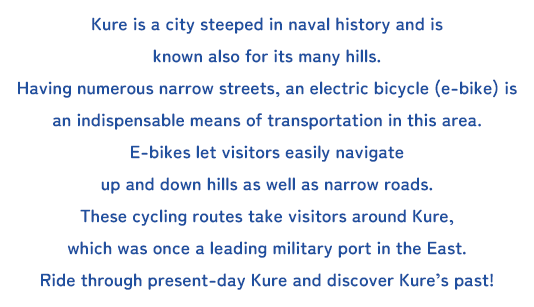
The coastline of Kure Bay is lined with large cranes, shipyards, and charming red-brick buildings. High ground, located up a sloping road in an urban area, offers views that give a glimpse of the history of Kure. This scenery owes a lot to the establishment of the naval district (a high command post in charge of defending military ports) in Kure during the Meiji era (1868–1912). Kure developed rapidly from a small port town to a naval city. With an E-bike, tour the vestiges of history and culture that survive to the present day.
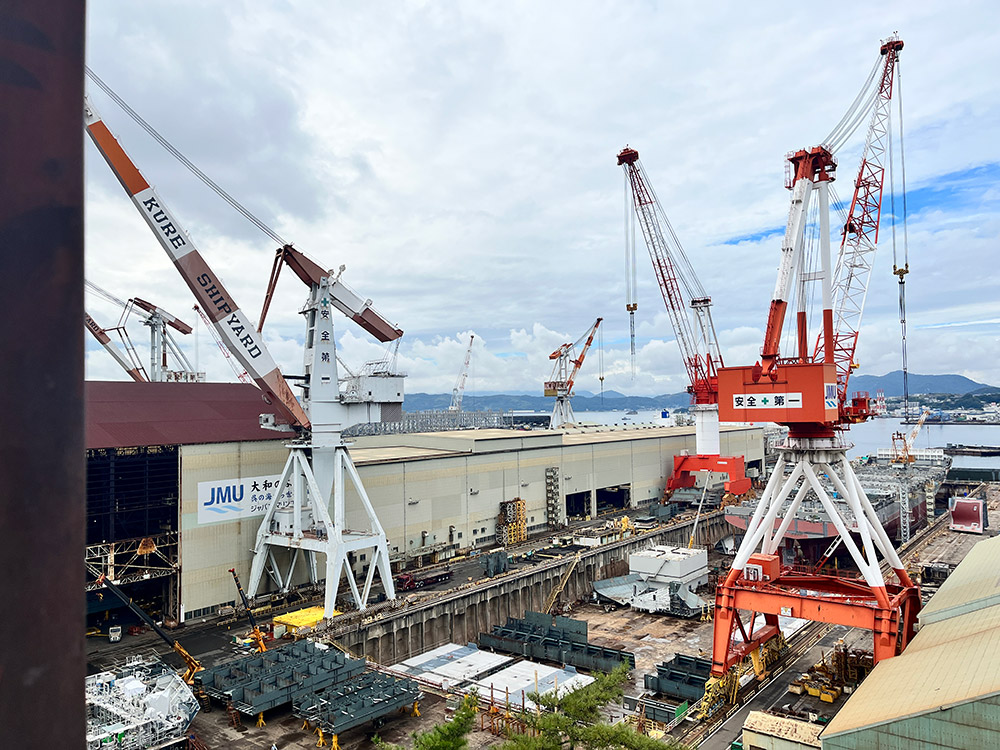
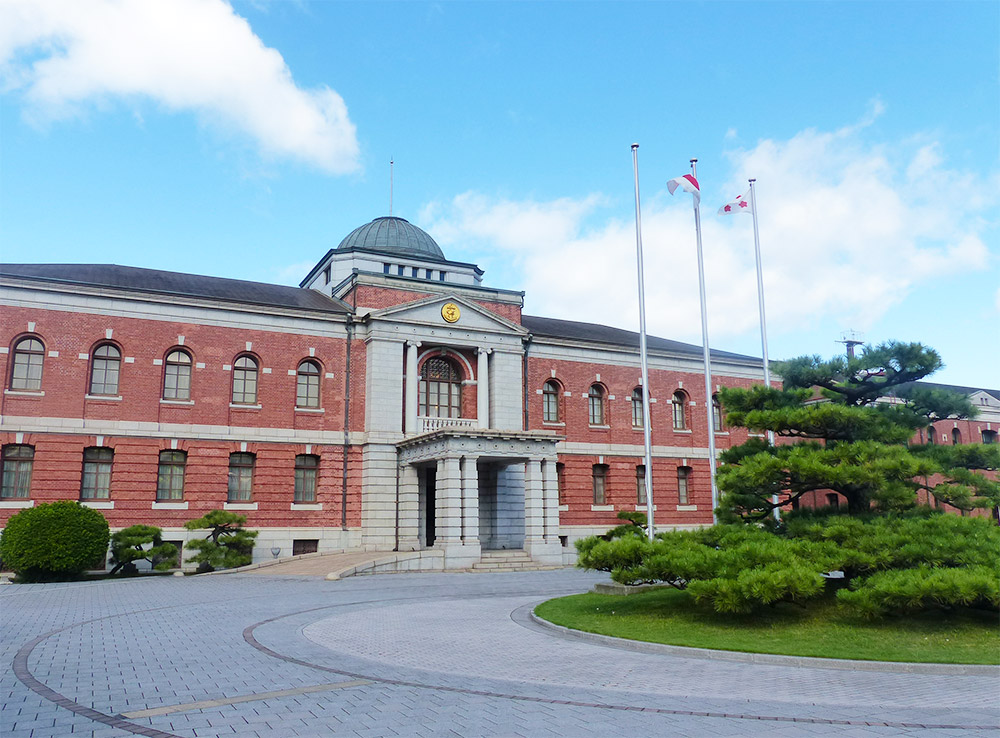
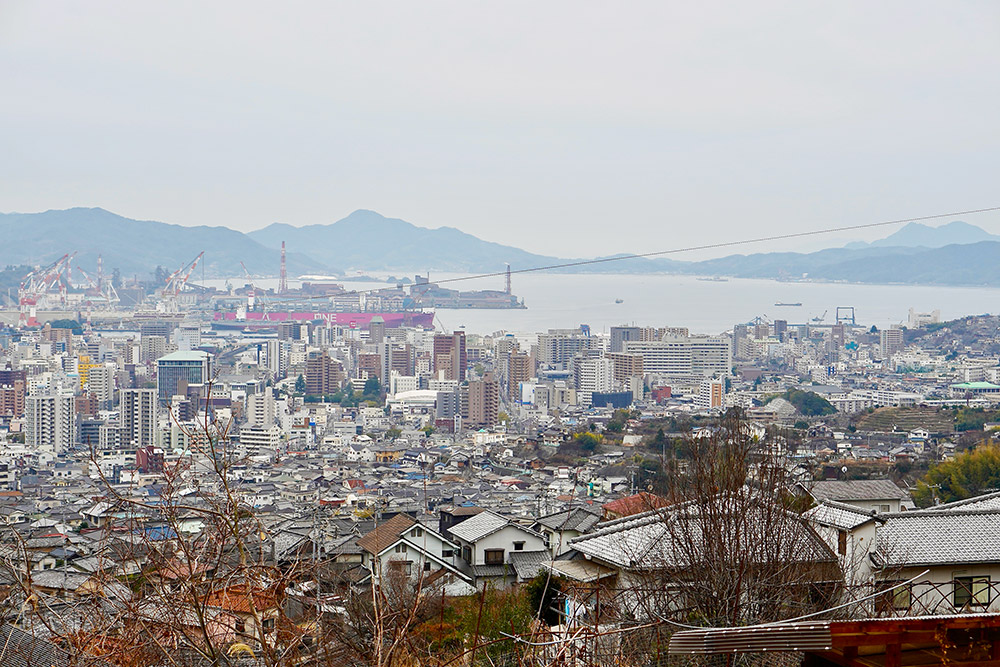
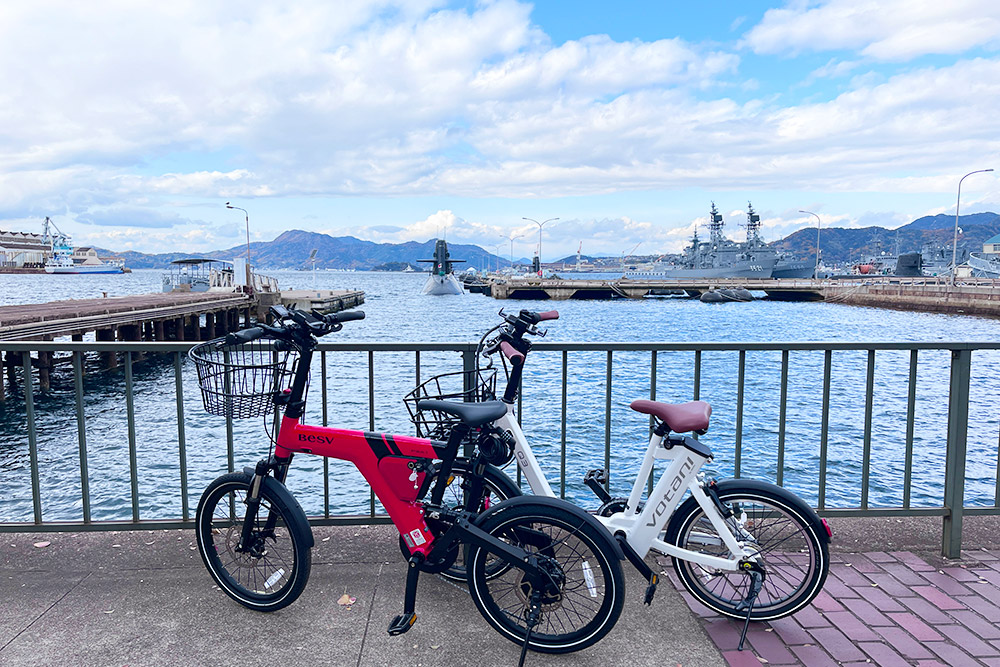
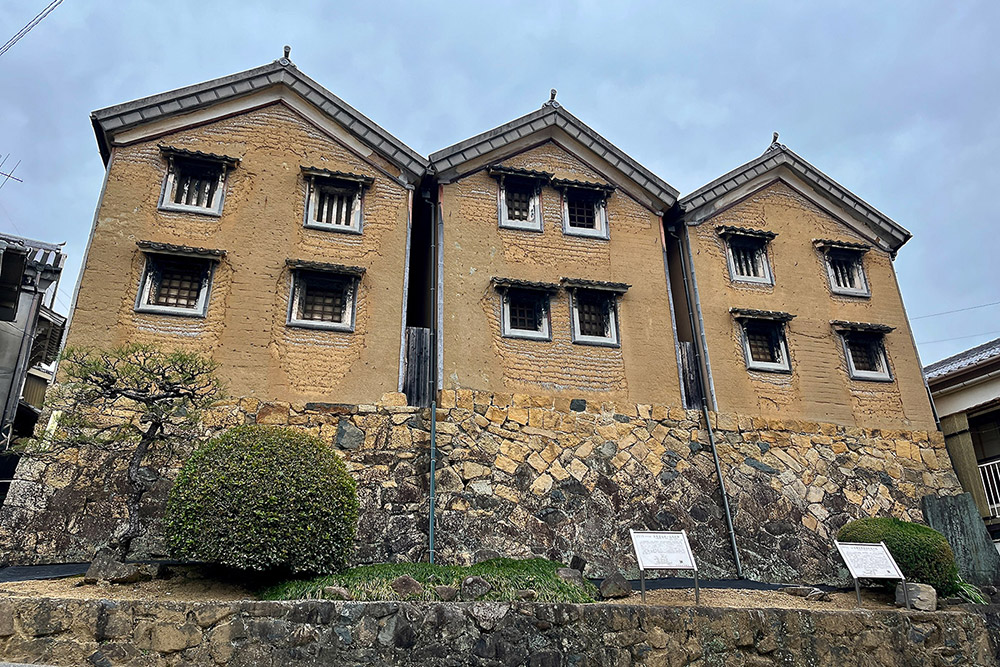
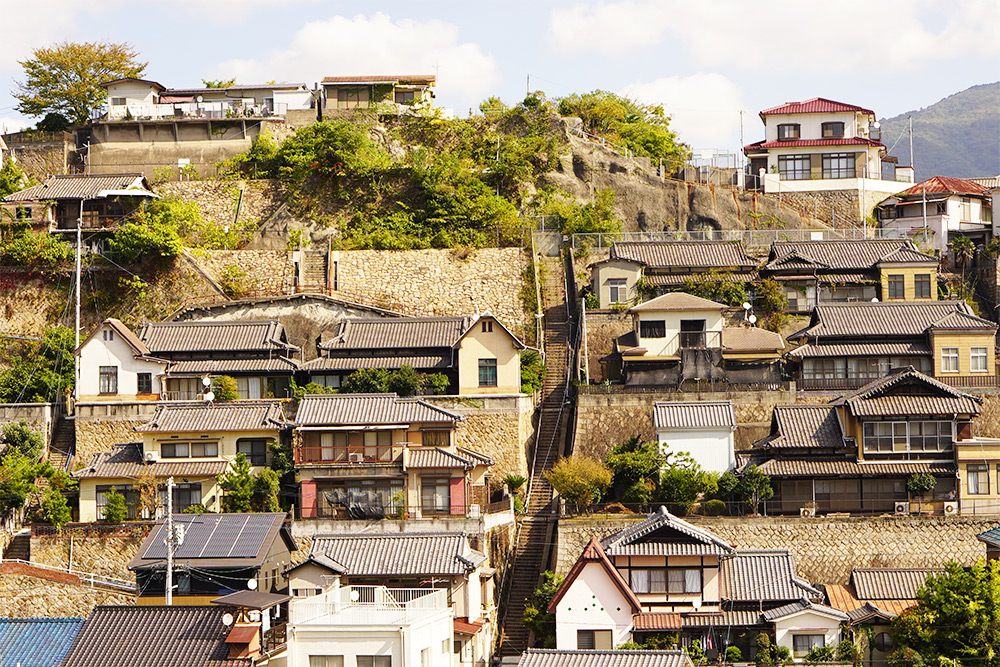

Naval factories from the late 19th century are still used as shipyards and factories. The coastline lined with such structures offers views of large ships under construction and huge cranes. The dynamic history of modern Japan, spanning some 150 years since the Meiji era (beginning in 1868), is condensed into this landscape. Enjoy cycling while feeling the sea breeze and the times change from the past to the present.
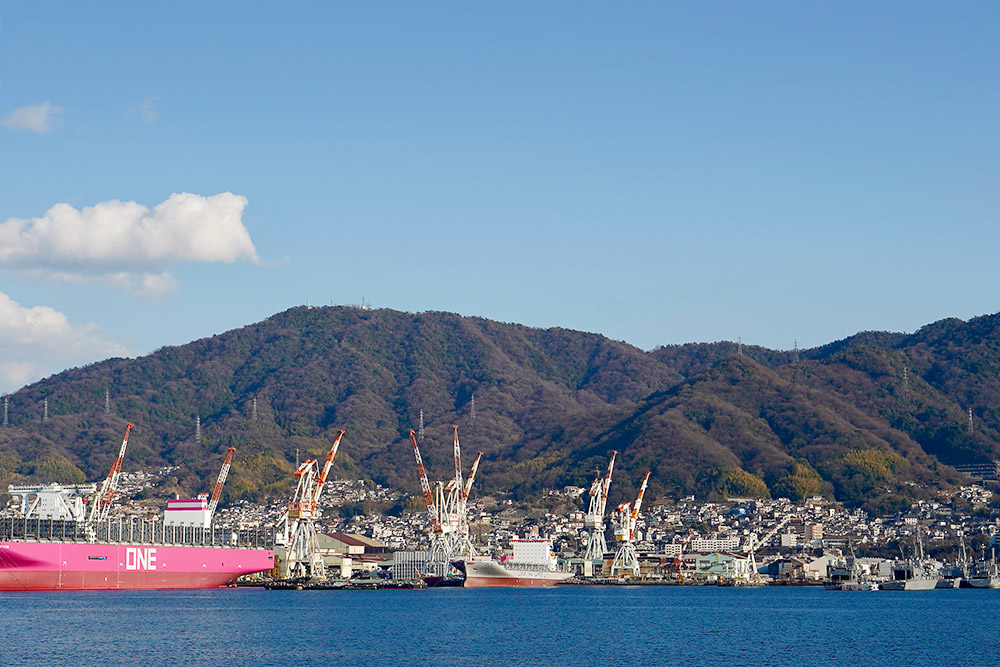
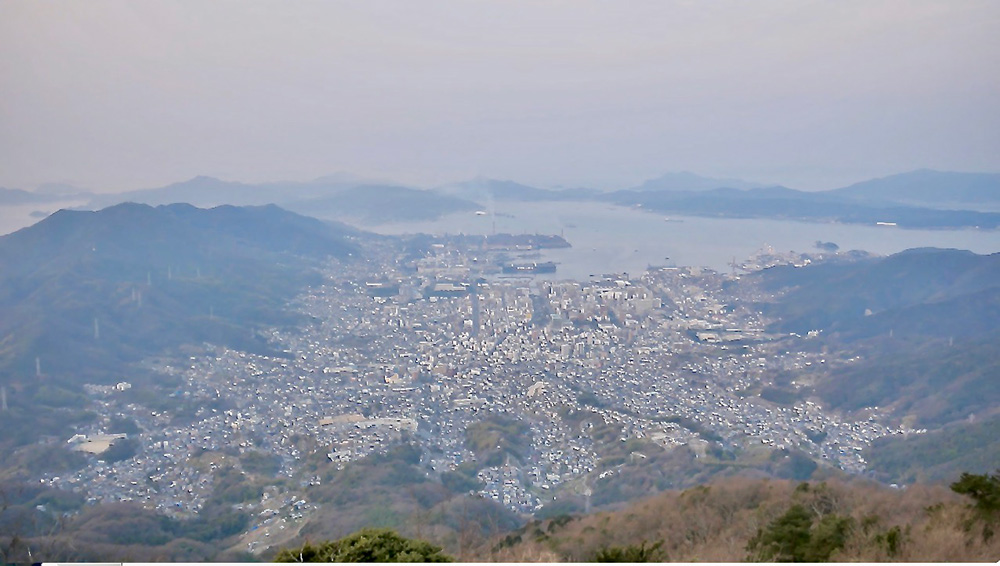

Suzu is a female protagonist in the manga, In This Corner of the World, set in the early Showa era (mid-1920s to early 1940s). The work has also been adapted into an animated film. Born and raised in Hiroshima, Suzu marries into a family in the naval city of Kure and gradually assimilates into her new family and city. The route covers buildings that appear in the work and “Suzu's house,” a site which served as a model for the Hojo family home where Suzu lived. Tour the places by putting yourself in the shoes of Suzu.


Starting from a flat urban area, you will see houses and brick walls built on the mountainside as you climb up winding slopes. At the top, a spectacular site awaits you looking right down on Kure Bay. You can hear birds and the wind if you listen carefully. You will find yourself reaching a state of “mental emptiness.” Continue along to Kannonji Temple on Mt. Ryojo. The temple is known for having a spot where wishes are said to come true.

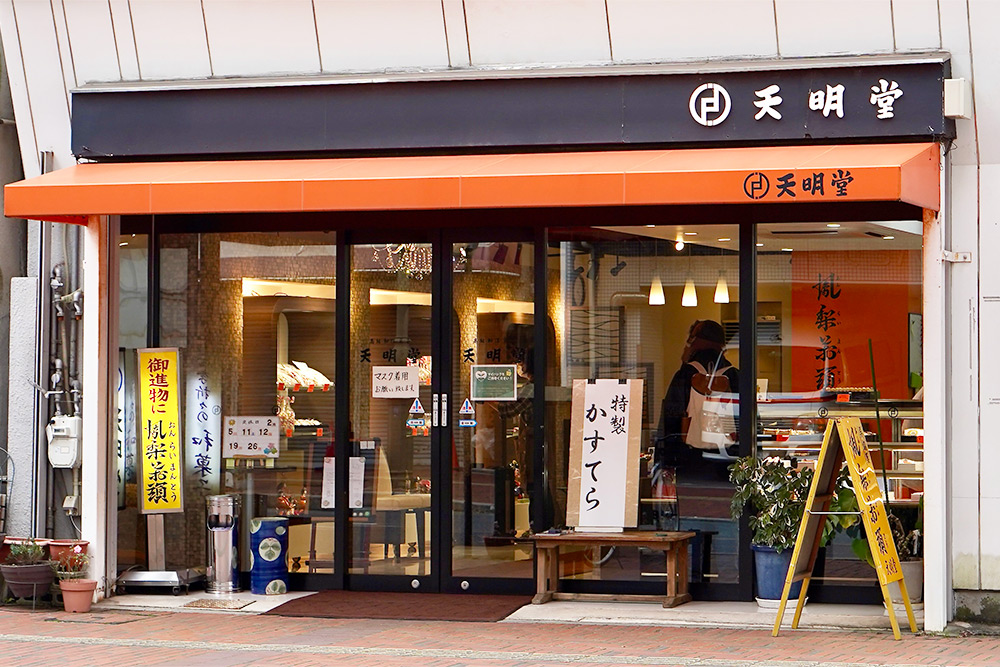

Walk down retro shopping streets, and eat foods and delicacies found only in Kure. One can find retro-style cafes, as well as many specialties that any visitor to Kure must try, including Chinese noodles, Kure cold noodles eaten both in summer and winter, and Kure oden and beef tendon. There are also sweets, such as fried cake made of crispy batter and bikkuri manju. Find your favorite shop while stopping for breaks at tea shops.



